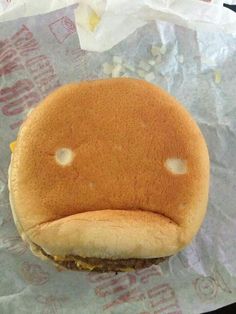According to the National Restaurant Association, who performed a recent study on fast food menu prices, the western region of the United States– obviously including us, California– saw a 3.9% increase in menu prices from January of 2024 to January of 2025. Considering the inflation the US has been experiencing these past four years, it becomes abundantly clear that, if it hasn’t already, the continuation of this trend will result in fast food being not nearly as cheap or easy as it’s supposed to be.
I stumbled across an old McDonald’s breakfast receipt online from 2015, and, curious, I compared the prices to the current menu. It was shocking, to say the least: an iced coffee (of any size, mind you) was only a dollar ten years ago. Now, on the McDonald’s website, it’s listed for $4.49. The current 2025 website lists a single hash brown as $3.69, whereas this customer online was able to get two for only $1.78. And the most jarring of them all was the fact that two sausage McMuffins– full blown breakfast sandwiches– were only $2.38. Now, for two of them, that price has gone up to $8.38.
Personally, I have felt these price hikes. While the California state minimum wage has risen to $16.50, one of the highest in the country, the thought of a singular sandwich taking away an half an hour’s worth work still isn’t pleasant. And with the rising prices, many Americans have begun to wonder whether or not the food itself is actually worth the cost.
A fairly recent survey from just last year reported that 62 percent of those surveyed are eating fast food less because of those rising prices. Yet, at the same time, a CBS news reported their own survey, in which “16% (of respondents) were just citing a declining quality of product.” It’s this supposed declining quality going hand-in-hand with the rising prices that is driving the fast food industry down. Over this past year, I’ve noticed the only food critic I listen to regularly, TheReportOfTheWeek (yes, the Popeye’s guy), coming out with more overwhelmingly negative food reviews than I’ve ever seen him make. And I can’t say I don’t resonate with this– I had a recent visit to El Pollo Loco in which they seemingly forgot to put in half of the advertised ingredients in their limited time ‘Overstuffed Quesadilla’.
It didn’t taste too great, either.
Limited time items at fast food restaurants have also begun to embody a microcosm of this larger issue. Even with both hands, I don’t have enough fingers to count just how many ‘ghost pepper’ items have come and gone at each establishment (without ever using real ghost peppers, mind you), or how many random chains have tried making chicken sandwiches. Taco Bell is guilty of both crimes. Remind me, why is Taco Bell making sandwiches?
Taco Bell was also very quick to axe its fan favorite Mexican Pizza due to ‘overly high demand’, all the while continuously adding in new temporary items that I personally had no interest in. While it was eventually brought back, the act of replacing classic items for what seem to be fads also raises other issues than hurting customer sentiment. For every new item that’s added, employees must learn to properly prepare it– adding on more stress to chains already dealing with the ripple effects of our country’s current economy. I almost feel bad each time I order something new on a whim at a place like, for example, Subway. Watching an employee double checking a recipe right in front of you isn’t exactly the most comforting feeling in food service. And even when I do get my order, whether it be from Subway or Taco Bell, I’m always surprised at the drop in quality compared to just a year ago. It reminds me that I very well could (and should) just eat at home.
Google Trends reports that searches for meal prepping over the past five years have been increasing steadily, with a new all time high being reached at the beginning of each year. I choose to interpret this as more people recognizing a potential lack of value in fast food, and instead starting to take meals into their own hands. Considering the increase in prices and fast food’s common health risks, choosing to eat at home might just end up being healthier for you and your wallet.

